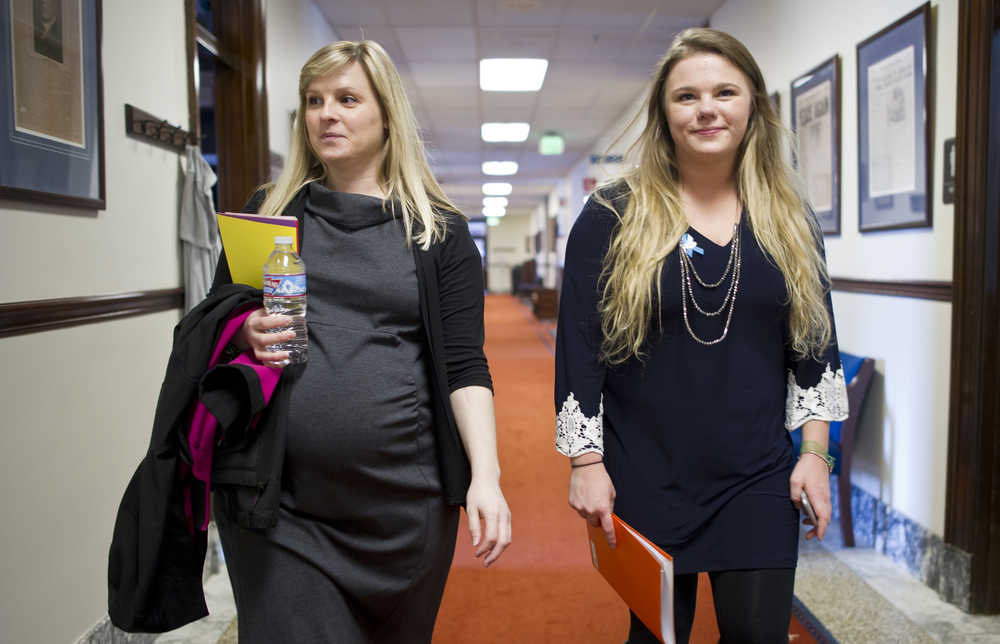As a foster care youth, 19-year-old Rachel Bedsworth has been placed in 47 different homes.
“Part of it was my fault just because I didn’t listen to parents. Sometimes when a family would try to be too close too quick, I would push them away,” Bedsworth said. “I still had my own family, so I was like, I don’t need a family, I don’t want a family.”
Sometimes it wasn’t her fault. She said some families treated her badly. Some didn’t feed her right. Bedsworth has been under the care of the Alaska Office of Children’s Services since she was 7.
“I’ve lived at places for a weekend. I had a family that got pregnant and needed me to leave. There have been so many different families,” she said.
Bedsworth is one of 2,929 Alaska youth or children in foster care as of the end of February, according to the Office of Children’s Services. That number has risen drastically over the past few years. Four years ago, that number was 1,860.
OCS Director Christy Lawton said right now is the highest it’s ever been. She accounts the rise to several factors — systematic changes within OCS and the state’s heroin epidemic.
“Despite that it’s never good to have more kids in foster care — our goal is to have less kids in foster care — these kids are kids needing service. These are kids that were in unsafe situations,” Lawton said.
For the nearly 3,000 foster youth in the system, there’s only about 1,600 licensed foster homes statewide. A nonprofit is trying to draw attention to this disparity and other foster care issues.
Bedsworth is a part of Facing Foster Care in Alaska, an organization of young people ages 15 to 24 who are currently in the foster care system or have previously been in the system. The nonprofit creates a network of peer support, develops leadership skills and works to improve the foster care system within the state and country. Members of FFCA meet up four times a year, including an annual visit in Juneau, which is ongoing right now.
The group of about 20 youth from all over the state arrived in the capital city on Wednesday. They went through training on the legislative process, on bills FFCA is advocating for and how to articulate and share their stories. They spent Thursday afternoon in legislators’ offices. They were scheduled to meet with the Lt. Governor Friday.
“A lot of legislators don’t know what’s happening with children and families and the system, so youth come and put a face to what’s going on,” said Amanda Metivier, executive director of FFCA, a former foster youth and Bedsworth’s foster mom.
“It’s one thing to hear numbers and budgets, but it’s another to hear a young person and hear the impact,” she added.
FFCA supports House Bill 27, which would help get foster youth into permanent homes more quickly and ensure foster youth aren’t released from the system before they’re ready.
“Every day a kid is away from a loving family, they’re being caused damage. At some point, that damage becomes abuse,” said Rep. Les Gara, D-Anchorage. Gara is the bill’s sponsor and he worked with FFCA on writing it.
HB 27 would also allow the court system to double-check on OCS social workers.
“We’re going to let court have the power to say if you’re not doing the work to get the child into a permanent home, you need to. And we’re going to let the caseworker prove it’s in the child’s best interest to send them out of foster care at age 19 or 20. Sometimes a child is ready, sometimes not,” Gara said.
HB 27 passed all its required committees last year, has bipartisan support and, when the Rules chair allows, is awaiting a vote on the House floor. The bill then goes to the Senate.
FFCA is also in support of matching legislation, Senate Bill 112 and House Bill 200, both introduced at the request of the governor.
Among many things, the bills would create a proxy system for cases involving Native Alaskan children, making the process of adoption or legal guardianships less cumbersome for a relative, tribal member or tribe than it currently is.
Another aspect of the bills would create a “one judge-one family” process within the court system instead of a case going through multiple judges, Lawton said. Other parts of the bill create efficiencies to get kids out of the system and into permanent homes.
SB 112 and HB 200 are still in the committee process.
Besides the bills, Metivier said the group is advocating for the general support of OCS and the web of other involved agencies, like the court system and social services. Budget cuts, even outside of OCS, have a ripple effect.
“If it’s cuts to substance abuse or behavioral health, parents can’t get help, they can’t get treatment and they can’t get their kids back,” Metivier said.
Another important thing the foster youth get to do during their Juneau visit? Just hang out.
For many, this is their only opportunity to spend time with other foster youth.
Rachel Bedsworth isn’t the only one among the group who’s been placed in 47 homes. Some of them have changed schools up to 20 times; some more than that. Several have been homeless. Most have been separated from their siblings. They have similar experiences that non-foster youth can’t relate to.
When the group isn’t in training or at the Capitol this week, they’re listening to music and eating meals together. They’re sharing stories, building lasting friendships and talking about how the foster system can be better.
Bedsworth, now a freshman at University of Alaska Anchorage, also wants to send a message.
“I want foster youth to know you’re not alone, that you have people,” Bedsworth said. “And I want communities to come together for the youth. I just want to grab people’s attention and say, ‘Hey, you need to see these kids.’”

